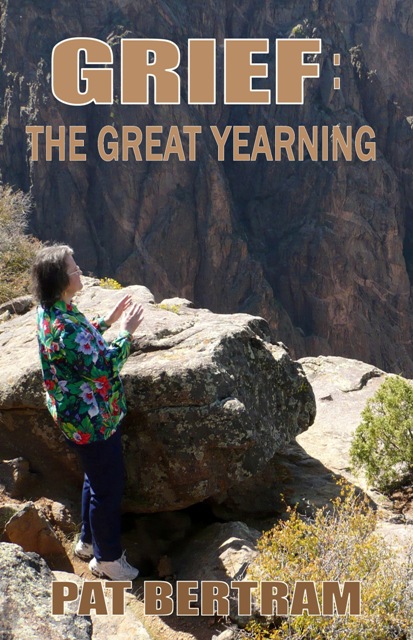 The Ambivalent Corpse is set mainly in Montevideo, Uruguay. Our heroes find parts of a dismembered corpse on a rocky stretch of beach in Montevideo, apportioned equally between the Memorial to a German cruiser sunk in World War II and the Memorial to Jews killed in the Holocaust. Because of the murder victim’s strategic location shared between two antithetical monuments, the Uruguayan press names her “The Ambivalent Corpse”. Private detective Roger Bowman and his girlfriend, scientist Suzanne Foster, find themselves traveling through Uruguay, Southwest Brazil, and parts of Paraguay and Argentina to help solve the case. Along the way they experience the local tourist attractions, lots of intrigue, and a complex murder mystery that Suzanne and Roger both play essential roles in solving. The plot races along at a rapid pace that makes this book very difficult to put down once you’ve started reading it. Start early if you want to get a full night’s sleep. This fast paced mystery has plenty of action, atmosphere, and sense of place. While the novel is basically a hard-boiled mystery story, it bends the genre slightly so that it should also appeal to readers interested in travel, romance, Indigenous creation legends, and South American food and wine.
The Ambivalent Corpse is set mainly in Montevideo, Uruguay. Our heroes find parts of a dismembered corpse on a rocky stretch of beach in Montevideo, apportioned equally between the Memorial to a German cruiser sunk in World War II and the Memorial to Jews killed in the Holocaust. Because of the murder victim’s strategic location shared between two antithetical monuments, the Uruguayan press names her “The Ambivalent Corpse”. Private detective Roger Bowman and his girlfriend, scientist Suzanne Foster, find themselves traveling through Uruguay, Southwest Brazil, and parts of Paraguay and Argentina to help solve the case. Along the way they experience the local tourist attractions, lots of intrigue, and a complex murder mystery that Suzanne and Roger both play essential roles in solving. The plot races along at a rapid pace that makes this book very difficult to put down once you’ve started reading it. Start early if you want to get a full night’s sleep. This fast paced mystery has plenty of action, atmosphere, and sense of place. While the novel is basically a hard-boiled mystery story, it bends the genre slightly so that it should also appeal to readers interested in travel, romance, Indigenous creation legends, and South American food and wine.
Excerpt:
Chapter 1. The Ambivalent Corpse Appears
We found the corpse on a rocky stretch of beach in Montevideo, about a mile east of the harbor. Pieces of the body were apportioned equally between the Graf Spee Memorial and the Holocaust Memorial, which are side by side on a grassy knoll overlooking the Rio de la Plata shore facing Buenos Aires to the south. Because of her strategic location shared between two antithetical monuments, one to the German warship scuttled near Montevideo Harbor in 1939 and the other to the victims of Nazi genocide in World War II, the Uruguayan press named her “The Ambivalent Corpse” (“El Cadáver Ambivalente”). But I’m getting ahead of myself in telling this story.
Early the morning after Suzanne and I arrived in Montevideo, the capital of Uruguay, we began a long run to start adjusting to the 4-hour time difference from California. Hopefully, the run would help us make up for only 4 hours of sleep. When dinners end at midnight as is typical for Uruguay, people sleep as late as they can the next morning. Thus the streets were mostly deserted. I better understood why the tradition of the siesta, or noon-3PM nap, became institutionalized in Spain and Latin America hundreds of years earlier.
After walking south and east from the hotel to the Rambla as a warm-up we ran east towards Punta Carreta at a pretty fast pace. Traffic at this hour was light. The Rambla was deserted at this hour except for a few older folks walking their dogs. Since everybody in Montevideo lived in an apartment, the dogs were small. So were most of the people at the end of the leashes.
Our run lasted only as far as the park with the lake on our left and the Maritime Museum, the Graf Spee Memorial, and the Holocaust Memorial on our right. Beyond the Museum was the Rio de la Plata. Far out of sight across the river was Argentina. Suzanne and I were the only live people visible anywhere in this area. It was impossible not to see the pieces of dead body lying by the two Memorials so we stopped and checked things out. Pieces of body were apportioned half and half between the Graf Spee Memorial and the Holocaust Memorial. The victim was a young woman who had almost certainly been murdered.
The Graf Spee Memorial features a six-inch cannon salvaged from the wreck and an explanatory plaque. The body parts were carefully placed around the concrete base the cannon is mounted on. Beside the Memorial was almost half of a dismembered corpse: a jean-covered leg beside an arm covered by the sleeve of a sweater, and the top half of the torso minus its head. The half-body was dressed in what was left of a turtle-necked sweater and obviously had belonged to a woman. She looked to have been young and in pretty good shape. There was very little blood visible, just the body parts.
The Holocaust Memorial is a large inscribed chunk of rock sculpture pulled away from a 350-foot long wall. The rest of the body parts were placed symmetrically around the base of the plaques. Next to the Memorial was the remaining half of the dismembered corpse: the other jean clad leg, the other sleeved arm, and the bottom half of the torso from the waist down to the groin area. This half-body was dressed in what remained of her jeans and matched the top half in gender and size. The parts would fit together like the pieces of a life-sized jigsaw puzzle.
Lying precisely between the two halves of the corpse was its head. The victim had long dark hair and was mid-20s to 30-ish and good looking. From the overkill brutality it seemed that the murderer was really pissed off at her.
Despite my years as a homicide detective in Los Angeles and the many dozens of murder scenes I’ve investigated the brutality and the cold-blooded theatricality of this murder scene caused my stomach to lurch. Years of training kicked in to make me seem a lot calmer than I actually was.
Suzanne turned a pale shade of green. I turned her gently away until she was no longer looking at the body.
“Take a couple of deep breaths,” I said. “Her suffering is finished. Think of it as if you were taking your old gross anatomy lab. What can you learn from what you see? Let your brain take over. You can handle this.”
She buried her face in my chest and trembled for a few moments while I held her tightly against my body. Then she tilted her head back and looked up at me.
“I can do that,” she said in a barely audible whisper, took a deep breath, and said again, this time in her normal voice, “Yes, I can do that.”
We had to find a telephone and call the police. I flagged down a passing empty cab from the wide boulevard by the Rambla. Fortunately the driver had a cell phone and contacted the police almost immediately. The first police car was there within 3 minutes. Within 20 minutes a crowd of cops was standing around staring at the remains. Suzanne and I stood out of the way and waited for the detectives. I looked at the scene carefully and observed all of the details I could.
Things were much too clean for this to have been the site of a bloody dismemberment. Obviously the body parts had been moved here after they were cut into seven different pieces. They were carefully arranged and displayed to send someone a message. The killer, or more likely killers, obviously thought their message was important enough to take some serious risks. Transport of body parts and setting up the display was very risky because the nearest place to park a car was at least several hundred yards away. I guessed that forensic evidence would be non-existent.
I couldn’t see any obvious wounds. A pathologist would have to determine cause of death. Drowning was a possibility, but no shark or marine animal could have dismembered a corpse so neatly. Time of death might also be difficult to determine if the body had been in cold water. The clothing looked wet. Either the corpse had been in the river or the clothes were wet from early morning dew. Forensic analysis of whether the water was brackish or fresh would decide this since the Rio de la Plata at Montevideo is a tidal estuary of the Atlantic Ocean. It fills with fresh water when the tide goes out and becomes a mixture of fresh and salt water when the tide comes in.
The detectives got there several minutes later and we became the guests of honor.
***
Short Bio: Jerold Last says, “I believe my strengths are in inventing interesting plots, paying attention to story details, and entertaining the reader. The science I sprinkle into the books is authentic; I have a Ph.D. degree in Biochemistry and am a Professor at a large university medical school. The locales are authentic; I’ve either lived in or visited all of the places my characters visit.”












February 12, 2012 at 12:31 pm
An intriguing excerpt and it moves the reader right into story.
February 13, 2012 at 4:11 pm
You really bring the memorials to life.. then I can’t stop reading.
February 18, 2012 at 11:46 am
Thank you, Juliet and Sheila, for the kind words. I hope you enjoy the full book. Please let us know; a review of the book on Amazon or Facebook would be greatly appreciated.
A working definition of having to compartmentalize one’s life has been the last few weeks for me. I’ve been writing a proposal with a very short deadline to the National Institutes of Health for a research grant to continue my scientific activities in Montevideo while trying to promote The Ambivalent Corpse and finish the next novel in this series. I have to turn the fictional part of my brain on and off daily, often several times a day.